Gardening magazines and blogs during the Autumn of the year are telling us how to put the garden to bed, preserve our harvest and settle in for the winter. I admit there is a cozy feeling in cleaning up the garden beds, covering them with a nice layer of leaves or mulch and letting them rest until next spring.
However, nothing could be farther from the minds of gardeners in the mild winter regions of the U.S. and elsewhere. This is the time for our lovely cool season herbs and vegetables to flourish. Instead of cleaning up the garden and putting it to bed, for us it’s time to clean up the garden, add some compost or fertilizer and get it ready for another growing season.
I love the fall planting and growing season. The days are cooler so it’s much less stressful to be in the garden and the types of herbs and vegetables that grow so beautifully are healthy and flavorful, too. Think of broccoli, kale, cabbage, carrots with herbs such as dill, cilantro, fennel, chervil and celery leaf to add flavor and depth to recipes.
Even here in Texas, with our mostly mild winters, I love to do soups and pots of beans during the winter. Our kitchen is so much more pleasant during the cooler months than during the summer. And, on cold days, a pot simmering on the stove helps keep our old farmhouse warm.
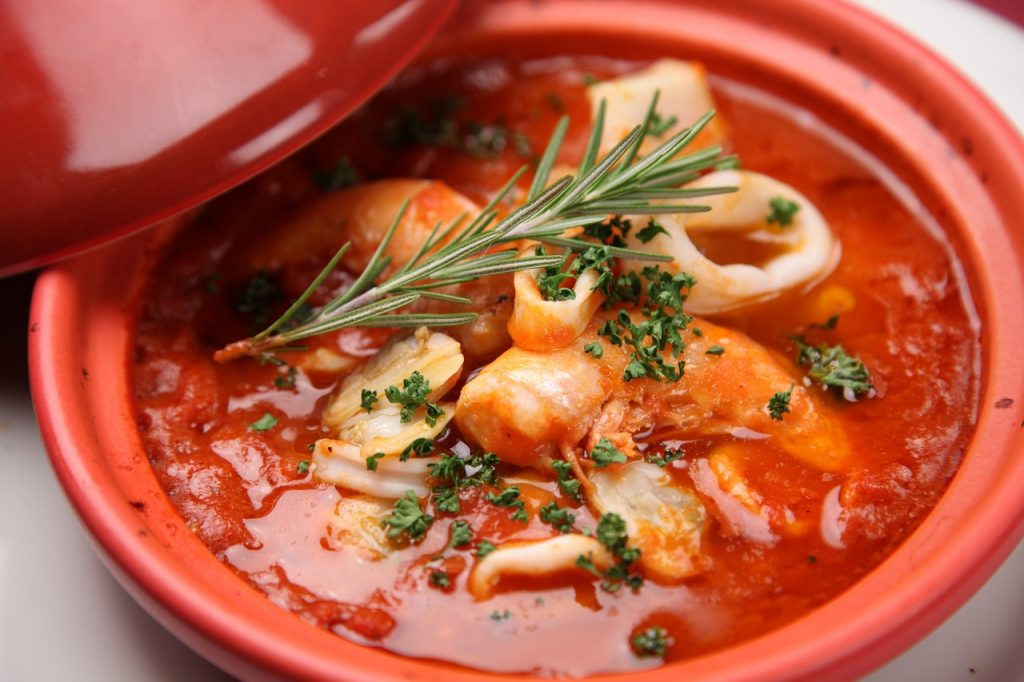
Getting Started in the Garden
Planting a fall garden can be done with transplants or by direct seeding. Direct seeding, of course, is more economical, but takes more time and care. Lots of people start with transplants, although herbs can be harder to find in the Fall. Finding specific varieties, such as heirloom types in transplants may be difficult, and starting your own from seed isn’t difficult. But, of course, it’s up to you how you want to start your garden. Root crop vegetables- beets, carrots, radishes… are best direct seeded and you’ll almost never see transplants for those.
If you’re planting in an area that was used for a spring and summer garden, you’ll want to add some fertilizer in the form of compost or a dry fertilizer that can be mixed with the soil. It would be helpful to have mulch available to spread around any transplants you use. Direct seeded crops should be allowed to come up a bit before mulching.
Garden Pests
Fall crops such as broccoli, cabbage, cauliflower and kale may attract little green worms that will devour the new leaves.
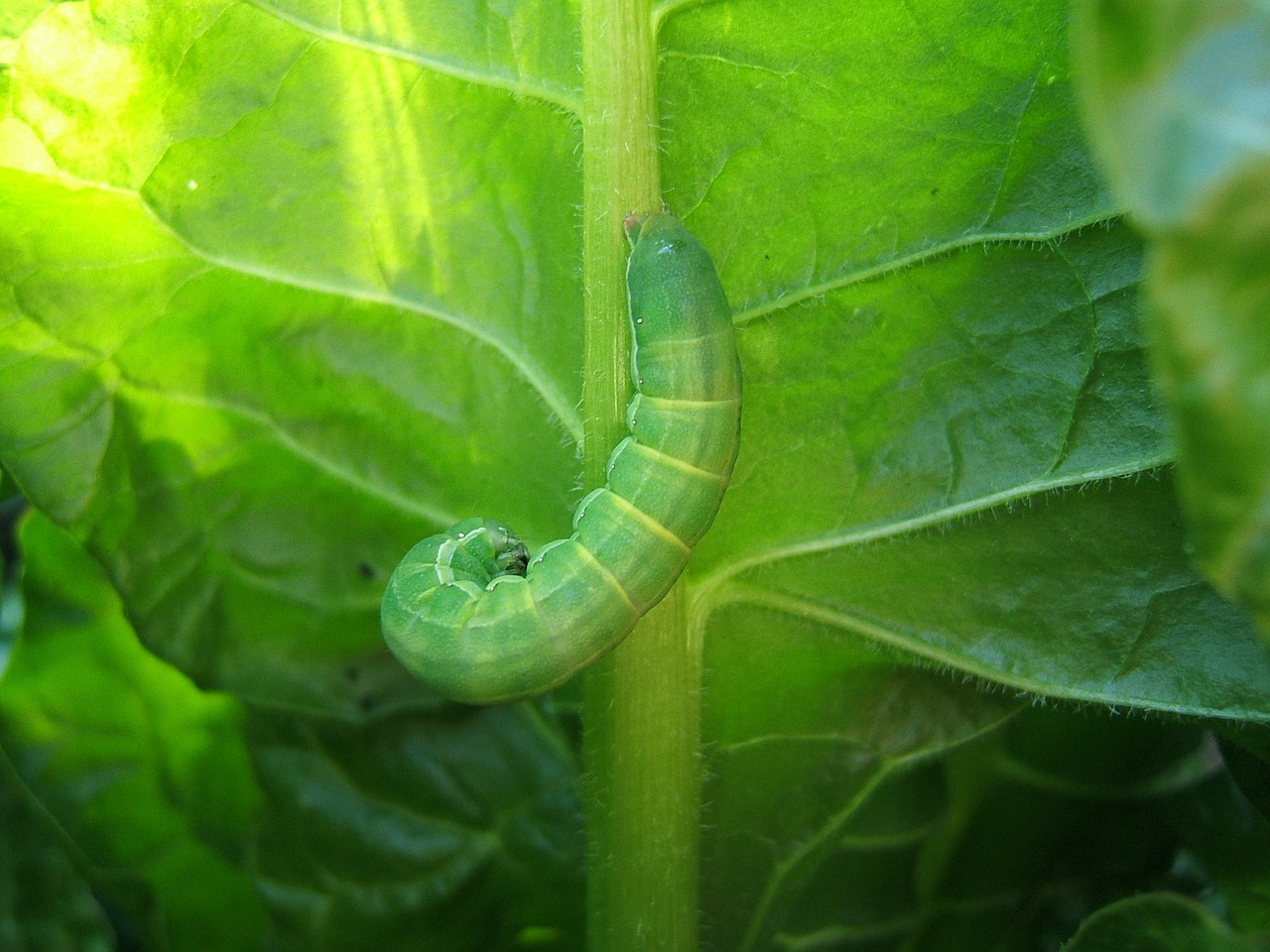
These little guys can devour a small seedling overnight! Keep a vigilant watch out for them! They are known as Cabbage Loopers and they are the larva of the Noctuidae Moth. As you can see, they blend in quite well with the new leaves. You need to look carefully, especially on the underside of the leaf.
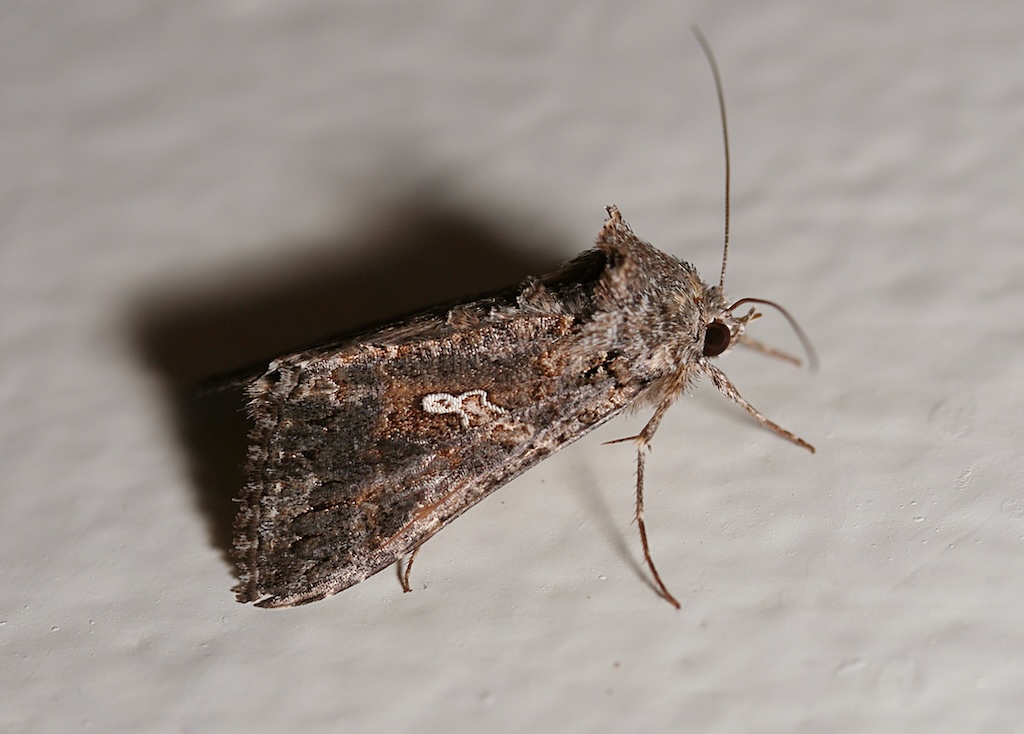
A handy, completely non-toxic way to deal with them is to cover your new crops or seed beds with a spun row cover material. This is a lightweight fabric that lets in light and water, but keeps the moths away from the plants so they cannot lay their eggs on your crops. There are several brands on the market and it’s getting easier to find at many retailers or on-line.
Another way to combat the little buggers is with a product that contains the ingredient Bt (Bacillus thuringiensis). Bt is certified for use in organic production and only targets the worms. It destroys the worm as it chews on the leaf. Bt is found in quite a few garden products in ready-to-use spray, a concentrate that you mix with water or in a powder form. Be sure to follow all directions on the package.
Be aware that Bt is a non-specific product. It will kill off any caterpillar that chews on a treated leaf, so if you’re seeing swallowtails or other beneficial insect larvae in the form of worms or caterpillars, you won’t want to spray Bt.
The Fall Garden
Go ahead and jump into the Fall gardening season with joy! The weather is cooling off, many of the bugs are gone and the crops you can grow now are so nutritious and varied, you’ll never get bored with your harvest. Don’t forget about the cool season herbs: parsley, dil, chervil, cilantro, salad burnet, thyme and of course, oregano and rosemary.
Grow in Containers
Don’t have a garden plot? Lots of fall vegetables and herbs fit very nicely in containers or even hanging baskets.
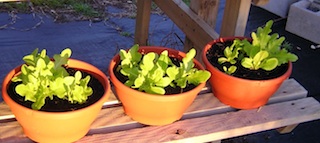
Some lettuce getting started in bowls for the fall.
Root crops such as carrots, beets, radishes and turnips grow extremely well in a container because the soil is soft and easy for them to grow out in. Just be sure to thin your root crops per the instructions on the seed package. If you’re worried about wasting your seed, use the thinnings in a salad or transplant them to another spot! Remember, if you don’t thin, the fleshy roots won’t have room to develop and all you’ll get is tops and thin, little radishes or beets.
Resources
Here are some VEGETABLES you can plant now and throughout the winter!
- Asian Greens – tatsoi, mizuna, komatsuna-seed in September or purchase transplants.Transplants are hard to find.
- Beets – direct seed after September 15
- Broccoli – seed in Sept or purchase transplants and plant late in September and throughout the winter
- Cauliflower – seed in September or purchase transplants and plant late in September and throughout the winter
- Cabbage – seed in September or purchase transplants and plant late in September and throughout the winter
- Carrots – direct seed after September 15
- Collards – seed in September or purchase transplants. Transplants are hard to find.
- Kale -seed in September or purchase transplants and plant late in September and throughout the winter
- Leaf Lettuce – many varieties available in seed, fewer as transplants. Seed in October when weather cools down and every 2-3 weeks during winter.
- Mustard Greens – seed in September or purchase transplants. Transplants are hard to find.
- Pak Choy/Bok Choi – seed in September or purchase transplants and plant late in September and throughout the winter
- Radishes – direct seed in September and every 2-3 weeks throughout winter.
- Spinach – seed in September or purchase transplants and plant late in September and throughout the winter
- Turnips – direct seed after September 15
Below you’ll find a listing of herbs and edible flowers that can be grown during the fall and winter months in mild winter areas. Here is a PDF you can print out with the information.
HERBS TO PLANT FOR FALL/WINTER GROWING
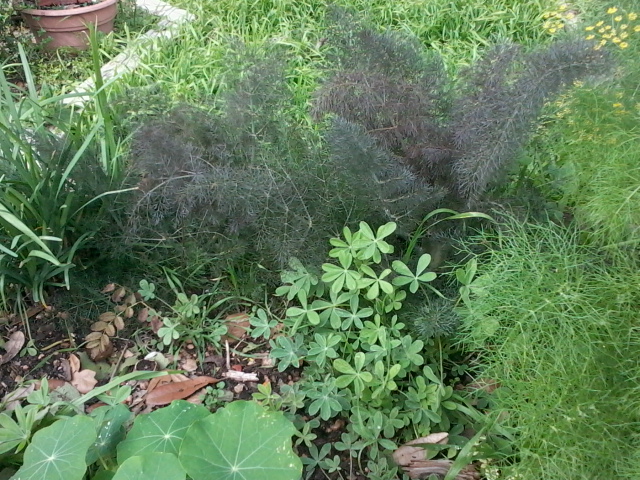
Bronze and Green Fennel and Nasturtiums are in focus in this late fall garden at The Herb Cottage
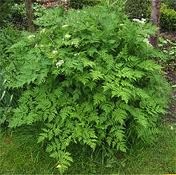
Chervil, a feathery, lovely herb with a mild anise flavor
- Cilantro
- Dill
- Chervil- a much underused herb here in the U.S.
- Parsley
- Fennel
- Rosemary
- Oregano
- Fennel
- Thyme
- Lavender
- Tarragon- French and Texas
- Mint
- Chives,
- Garlic Chives
- Sage
EDIBLE FLOWERS FOR FALL AND WINTER
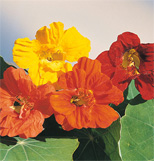
Colorful, Spicy Nasturtiums grow until frost.
When eating flowers, just be sure they have not been treated with pesticides. Flowers from a florist are generally not recommended for eating.
Dig out your gardening togs, gloves and boots!
Let’s plant a Fall Garden! You’ll be glad you did!
Until Next Time,
Be Well and Enjoy your Gardens
Cindy
Will people ever be wise enough to refuse to follow bad leaders or to take away the freedom of other people? -Eleanor Roosevelt, diplomat, author, and lecturer (11 Oct 1884-1962)
